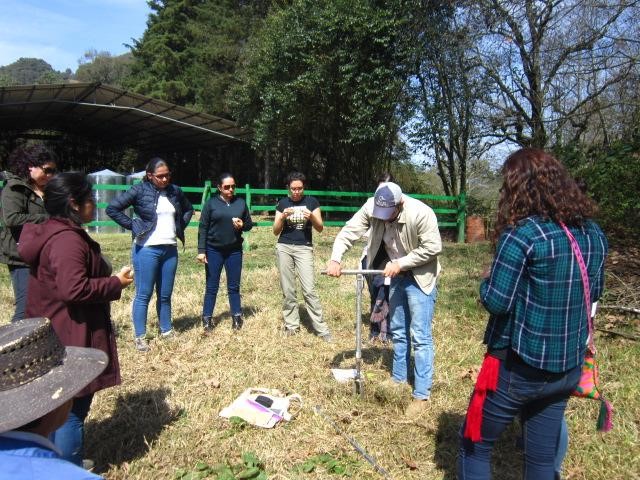

Le protocole local contextualise le protocole de Kyoto en l'adaptant aux conditions locales, développe des méthodologies MRV (mesure, rapport et vérification) formelles et contextualisées, et confère une valeur au capital naturel d'une manière qui favorise les propriétaires terriens.
Nous proposons de reproduire cet élément de base au niveau infranational : le financement de l'atténuation de l'empreinte carbone par le biais de petites taxes d'État qui constituent un fonds d'État - fonctionnant selon un protocole local, adapté aux contextes des propriétaires fonciers - avec un financement supplémentaire par des organisations gouvernementales - la CONAFOR et la SAGARPA. Nous fournissons une assistance technique aux fonctionnaires d'autres États pour qu'ils adaptent ce modèle à leur contexte et à leurs priorités.
Dans un souci de transparence et de normalisation, nous utilisons les méthodologies validées de l'ICAT pour calculer les réductions de carbone basées sur la récupération du capital naturel. Nous développons des modèles écologiques personnalisés pour différents États et fournissons une formation pour aligner les politiques publiques, en promouvant un financement innovant par le biais de petites taxes sur le carbone au niveau de l'État et d'un investissement fédéral accru orienté vers l'intégration de pratiques régénératives. Il s'agit d'une politique publique qui incite à l'atténuation du climat et à la régénération des infrastructures naturelles, ancrée dans une réponse collective de la société rurale.
L'urgence d'intégrer des pratiques qui régénèrent le capital naturel est renforcée par les résultats très positifs des ranchs pilotes. D'autres États s'y intéressent vivement.
Notre initiative, incarnée par la NAMA NS-272 "Subnational mitigation actions for the restoration of degraded forests and the implementation of planned grazing", propose une action bien planifiée et comprend des outils qui permettent de la reproduire dans d'autres contextes.
Un large éventail d'outils a été défini, développé et appliqué dans le cadre de la mise en œuvre de cet élément constitutif. Ces outils comprennent l'adaptation des modèles en vue de leur reproduction dans des États ayant des besoins et des contextes différents, des systèmes de suivi, des rapports et la vérification de la conformité et des résultats dans les sols et les forêts, des accords entre les parties, l'analyse des opportunités fiscales, des règles de fonctionnement et des lignes directrices visant à garantir la transparence dans la gestion des fonds pour l'environnement. Un outil important consiste à personnaliser les modèles pour reproduire cet élément de base dans différents États.
La Banque interaméricaine de développement souhaite poursuivre son soutien en recherchant des ressources financières provenant de fonds climatiques à plus grande échelle.
Le bureau SEMARNAT (Secrétariat de l'environnement et des ressources naturelles) de l'administration du président élu du Mexique a manifesté son intérêt pour l'adoption de ce programme en tant que ligne d'action stratégique pour les six prochaines années. Ce soutien est d'une grande valeur et ouvre de nouvelles possibilités de diffusion et d'application.